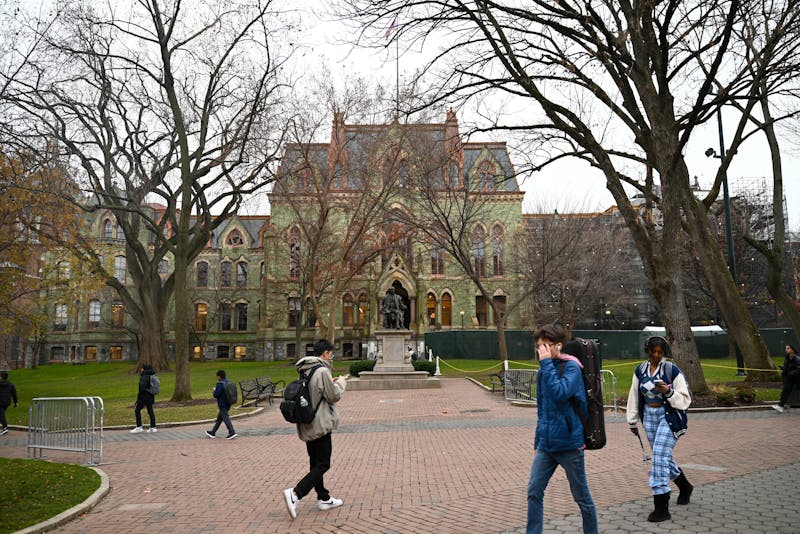
In recent weeks, Penn released sparse demographic data for the Class of 2028, revealing a two percentage point decline in the percentage of students that are from races and ethnicities historically underrepresented in higher education. According to this report, 23% of the incoming class belongs to Black, Hispanic, Native American, and Hawaiian or other Pacific Islander groups, a decrease from the 25% we saw in the Class of 2027. But as we dig deeper, there is a glaring omission: Penn has refused to provide a detailed racial breakdown of these numbers.
The United States Supreme Court’s 2023 decision to strike down affirmative action sent shockwaves across higher education, sparking fears that it would reverse hard fought gains in access for Black, Hispanic, Native American and other marginalized communities. So why, at a time when diversity is under siege nationally, does Penn choose to obscure rather than illuminate this data?
Across the nation, universities like Harvard, the Massachusetts Institute of Technology, and Brown have seen alarming declines in Black student enrollment, reporting year-over-year drops of 4 percentage points, 10 percentage points, and 6 percentage points, respectively. Yet, not all universities are following this path of decline. Duke University and the University of Virginia have reported an increase in the enrollment of Black, Hispanic, and Native American students, a result that few expected after the court ruling. Both universities achieved this with proactive measures, including initiatives to recruit students from low-income and underserved high schools in their local regions.
But what steps is Penn taking in response to these national trends? While the administration has demonstrated a step in the right direction to fostering diversity — such as through the College Horizons Program, which empowers Native American, Alaska Native, and Hawaiian Native students with culturally relevant college advising — its response to broader issues, like admissions transparency, remains lacking. In the wake of the Supreme Court’s affirmative action ruling, Penn’s leadership at the time stressed that, while admissions practices might change, the University’s values would not. Upholding these values means being transparent with the community, yet the administration’s reluctance to release demographic data sends a different message.
This could be a moment for Penn to demonstrate bold leadership, but instead, it feels like we are retreating into silence.
This is not just about numbers — it is about Penn’s legacy. Penn has long maintained a pattern of reservation when it comes to transparency in its admissions practices. From declining to share acceptance rates, to now omitting crucial demographic data, the community is left in the dark. Dean of Admissions Whitney Soule explained that Penn’s omission of specific racial breakdowns for the Class of 2028 follows the same approach as previous years, aiming to emphasize broader diversity metrics such as the proportion of first-generation and Pell-eligible students.
And while Penn did release the percentage of students of color, the lack of specific racial group data — that it once used to provide — prevents us from understanding which communities saw increases or decreases in representation, leaving critical questions about the new class unanswered.
At an institution that prides itself on being open-minded and self-improving, this reluctance to release crucial data feels at odds with Penn’s core commitment to advancing social good.
The deeper issue here is how Penn defines and balances its admissions priorities. Contrary to popular belief, admissions is not solely about identifying the “most qualified” applicants. In reality, the process is about meeting a range of institutional goals — academic excellence being just one of them. Diversity, geographic representation, and financial viability are equally as important. Duke and Virginia have shown that these goals can coexist — and Penn is perfectly posined to implement similar regionally focused outreach programs.
And yet, when it comes to transparency about how these priorities are reflected in the incoming class, Penn continues to fall short. Trust is not built on assumptions — it is built on evidence. If the University is truly committed to diversity, it should be eager to show us how that commitment manifests itself in its admissions decisions. Why hold back if there is nothing to hide?
In a post-affirmative action world, universities are navigating uncharted territory. This is Penn’s chance to define what leadership looks like in this new landscape. Transparency acts as a tool for change. Releasing the admissions data will allow the community to engage, challenge, and work towards solutions. Penn could invite students, faculty, and administrators to collaborate on developing a more inclusive admissions process. Penn has the chance to prove that diversity is not just a word in its brochures — it is a commitment that the University is willing to back with transparency and real policies.
Editorials represent the majority view of members of The Daily Pennsylvanian, Inc. Editorial Board, which meets regularly to discuss issues relevant to Penn's campus. Participants in these meetings are not involved in the reporting of articles on related topics. Reach us at edboardchair@dailypennsylvanian.com.
Correction: This editorial has been updated to reflect that Harvard saw a 4 percentage point decline in Black student enrollment, the Massachusetts Institute of Technology saw a 10 percentage point decline in Black enrollment, and Brown University saw a 6 percentage point decline in Black enrollment compared to the year prior. The DP regrets the error.
The Daily Pennsylvanian is an independent, student-run newspaper. Please consider making a donation to support the coverage that shapes the University. Your generosity ensures a future of strong journalism at Penn.
Donate











